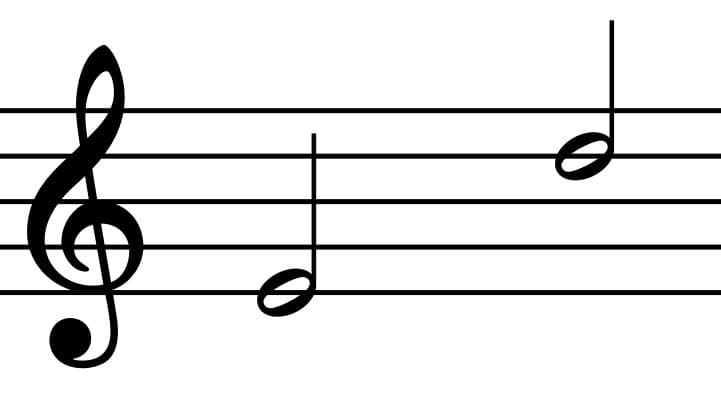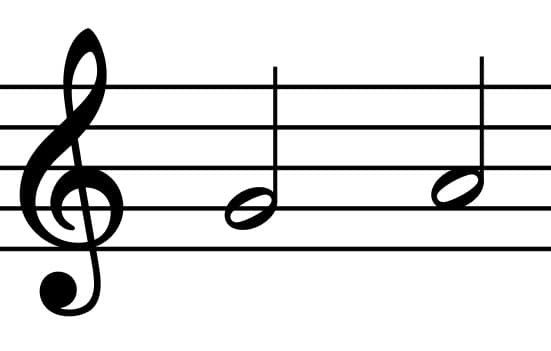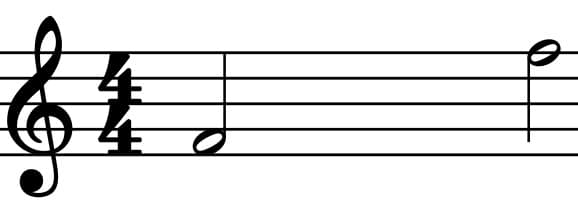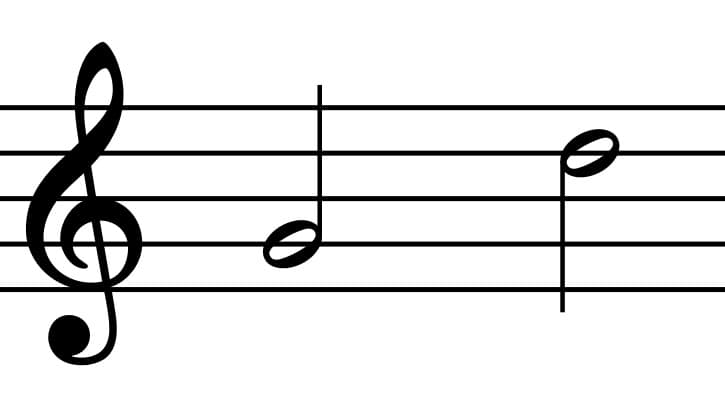Myths about teaching can hold you back
- Year 11
- OCR
Developing pitch dictation skills
I can notate consecutive intervals to complete pitch dictation accurately.
- Year 11
- OCR
Developing pitch dictation skills
I can notate consecutive intervals to complete pitch dictation accurately.
These resources will be removed by end of Summer Term 2025.
Switch to our new teaching resources now - designed by teachers and leading subject experts, and tested in classrooms.
These resources were created for remote use during the pandemic and are not designed for classroom teaching.
Lesson details
Key learning points
- Notating a whole melody can be done by breaking it into a series of consecutive intervals.
- Identify the melodic shape, then identify the first interval by singing it back and compare it to reference melodies.
- Notate the first interval, then repeat for each consecutive interval.
- Check your answer by matching it to the melodic shape visually and singing it back.
- When given the rhythm, we should be careful to accurately copy it in the notated pitches.
Keywords
Interval - the distance in pitch between two notes (e.g. a 5th)
Semitone - the smallest interval in most Western music (e.g. C to C#)
Tone - an interval of two semitones (e.g. C to D), also called a major second
Common misconception
Working out the notes of a whole melody by ear is a very difficult musical skill.
While it seems challenging, if you break it down into small steps - individual intervals - it is no more difficult than working out one interval. Take it one step at a time in small chunks and it is completely achievable.
To help you plan your year 11 music lesson on: Developing pitch dictation skills, download all teaching resources for free and adapt to suit your pupils' needs...
To help you plan your year 11 music lesson on: Developing pitch dictation skills, download all teaching resources for free and adapt to suit your pupils' needs.
The starter quiz will activate and check your pupils' prior knowledge, with versions available both with and without answers in PDF format.
We use learning cycles to break down learning into key concepts or ideas linked to the learning outcome. Each learning cycle features explanations with checks for understanding and practice tasks with feedback. All of this is found in our slide decks, ready for you to download and edit. The practice tasks are also available as printable worksheets and some lessons have additional materials with extra material you might need for teaching the lesson.
The assessment exit quiz will test your pupils' understanding of the key learning points.
Our video is a tool for planning, showing how other teachers might teach the lesson, offering helpful tips, modelled explanations and inspiration for your own delivery in the classroom. Plus, you can set it as homework or revision for pupils and keep their learning on track by sharing an online pupil version of this lesson.
Explore more key stage 4 music lessons from the Listening: dictation unit, dive into the full secondary music curriculum, or learn more about lesson planning.

Equipment
Licence
Prior knowledge starter quiz
6 Questions
Q1.What interval is this?

Q2.What interval is this?

Q3.Which of these is the smallest interval?
Q4.A conjunct melody is likely to use only tones and .
Q5.Which reference melody could we use to identify a sixth?
Q6.Which reference melody could we use to identify a semitone?
Assessment exit quiz
6 Questions
Q1.Melodies are easier to work out if we break them into individual __________.
Q2.What interval is this?

Q3.What interval is this?




